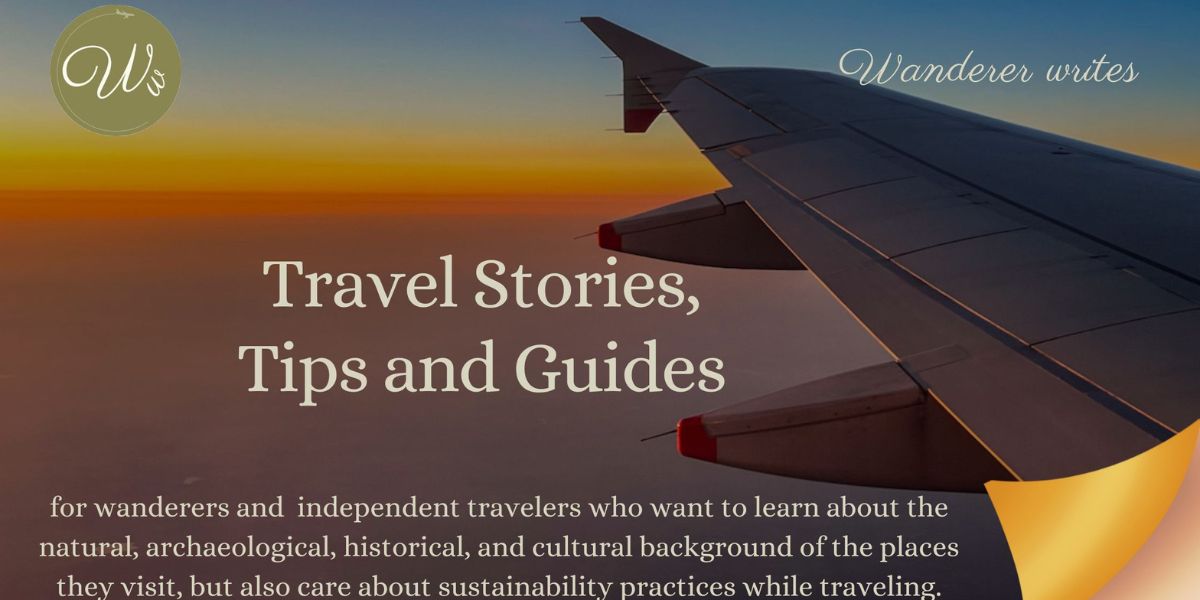
Visiting Copán Ruins, one of the major ancient Maya archaeological sites, was something Jeff and I wanted to do for decades. We finally made it, in January of 2025.
While waiting for this opportunity, we visited plenty of otherMaya sites, most of them in Mexico, though we also got to seeTikalin Guatemala and several others, including Caracol, in Belize.
And finally, after decades of reading and watching documentaries about the site, we visited Copán Ruins.
We didn’t spend months trekking through dense jungle and floating through narrow rivers to get to Copán like explorers Stephens and Catherwood in 1839.
However, considering its relative closeness – and the fact that we are in the 21st century – , getting there was quite a trip, taking us about 24 hours, including two flights, five hours in an airport, and over four hours driving from the airport to the town of Copan Ruinas. Though exhausting, it was absolutely worth it!
And the best part (or one of the best parts): Copán ruins were never crowded while we visited. We were often alone in a plaza, with no one else in sight. Our hotel in town was usually empty; most nights we were their only guests. We expected it to be more popular, but enjoyed the solitude.
Copán Ruins: Our Visit
Scarlet macaws – guacamaya roja – greeted us as we entered the site, even before we reached any ancient structures:
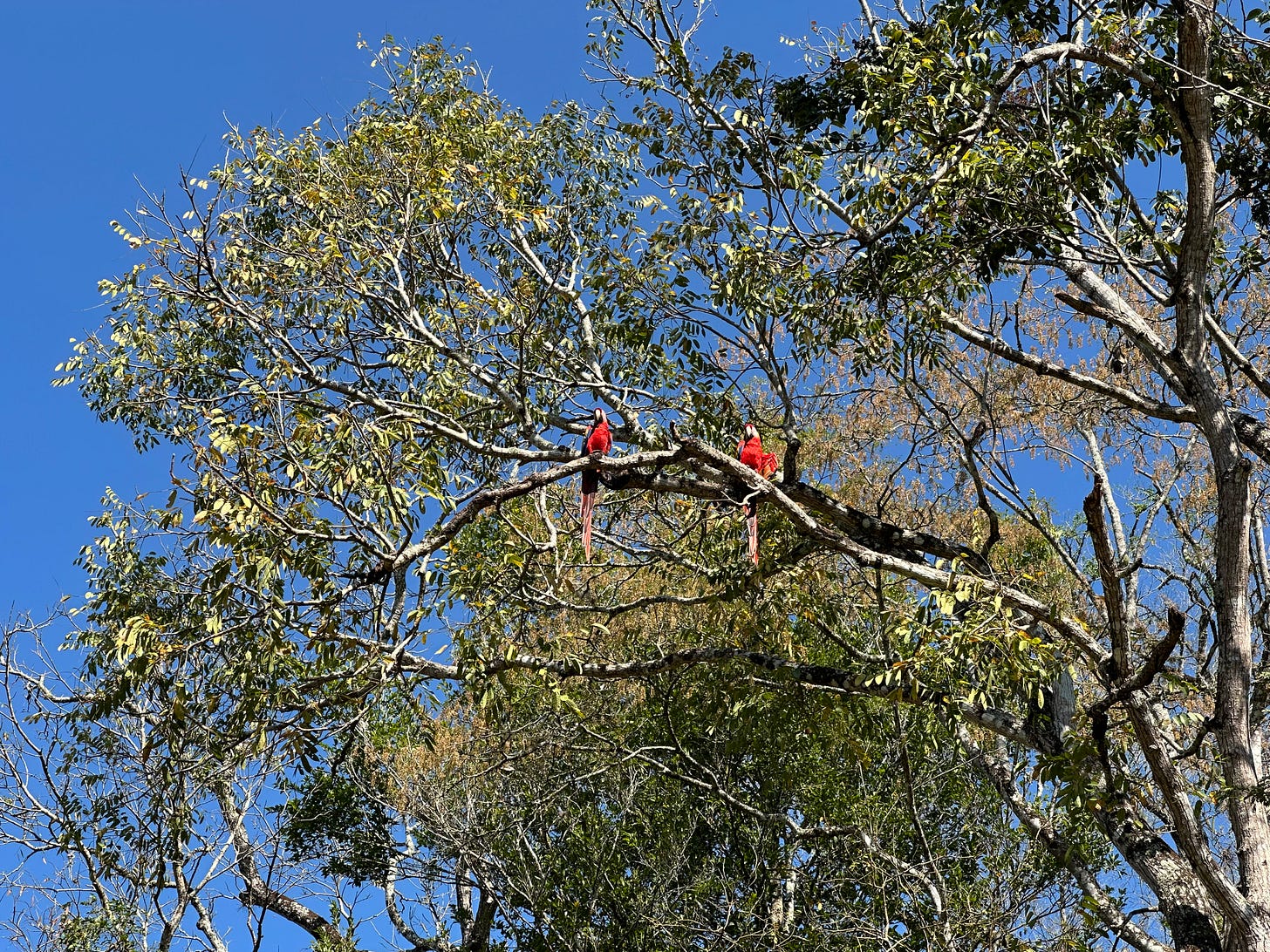 Scarlet macaws in Copán Ruins
Scarlet macaws in Copán Ruins
I even spotted a small turtle along the trail:
 Turtle along the path to Copán Ruins
Turtle along the path to Copán Ruins
We entered the site near the Great Plaza, filled with stelae, most of them depicting Copán’s 13th ruler, Waxaklajuun-Ubaah-K’awiil, also known as 18-Rabbit.
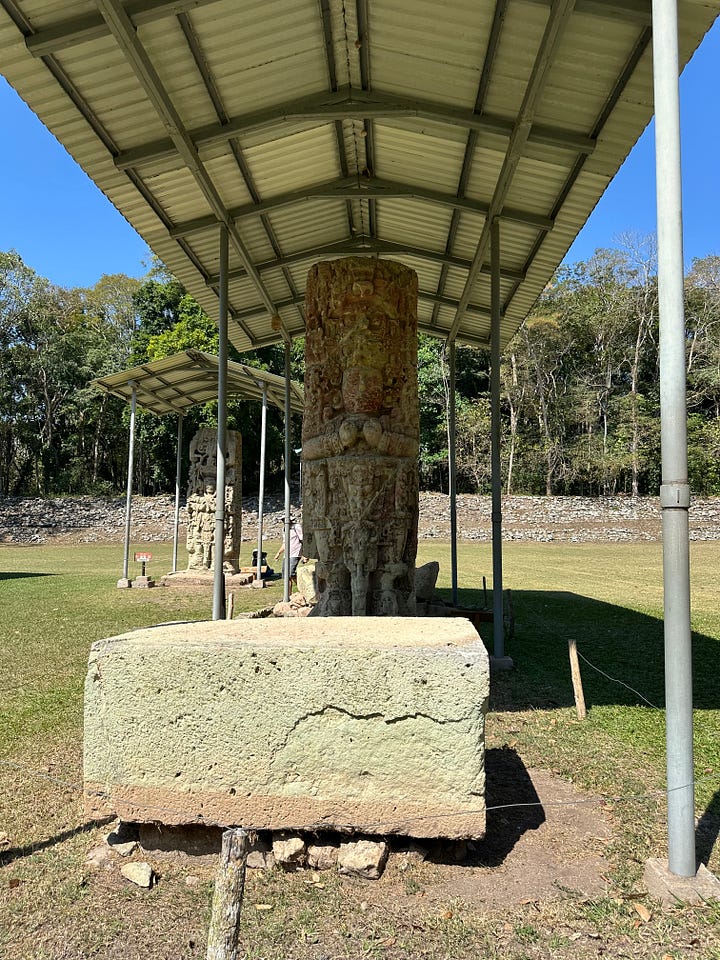 Stelae representing Washaklahun-Ubah-K’awil, known as 18-Rabbit in the Great Plaza of Copán
Stelae representing Washaklahun-Ubah-K’awil, known as 18-Rabbit in the Great Plaza of Copán
After exploring the stelae – a stone forest of one king’s representation through different stages of his life -, we walked on.
Climbed a small pyramid, Structure 4, then walked over to the ball court.
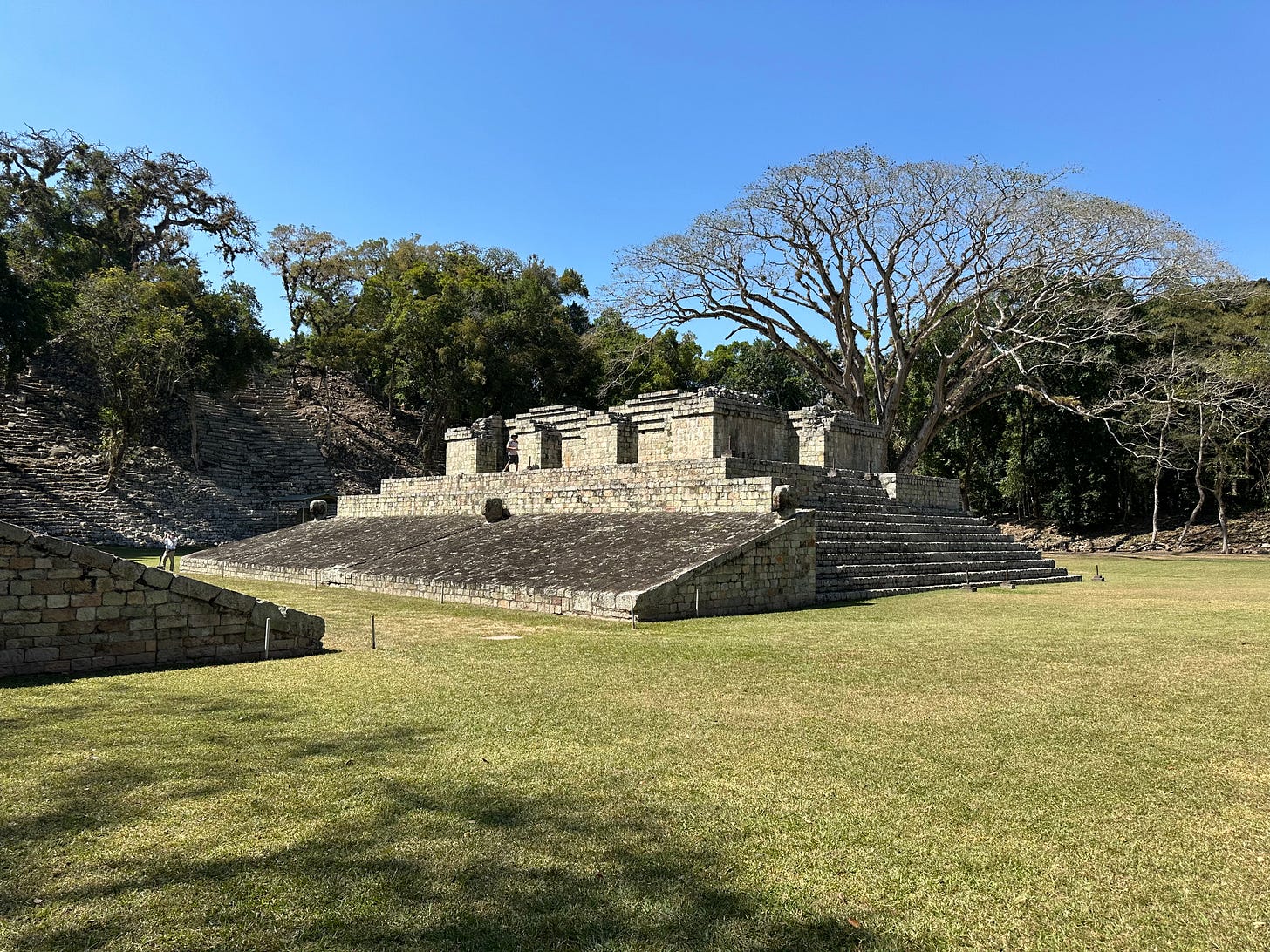 the ball court
the ball court
We enjoyed the shade under the canopy that protects the Hieroglyphic Stairway (the longest known pre-Columbian text known so far in the Americas).
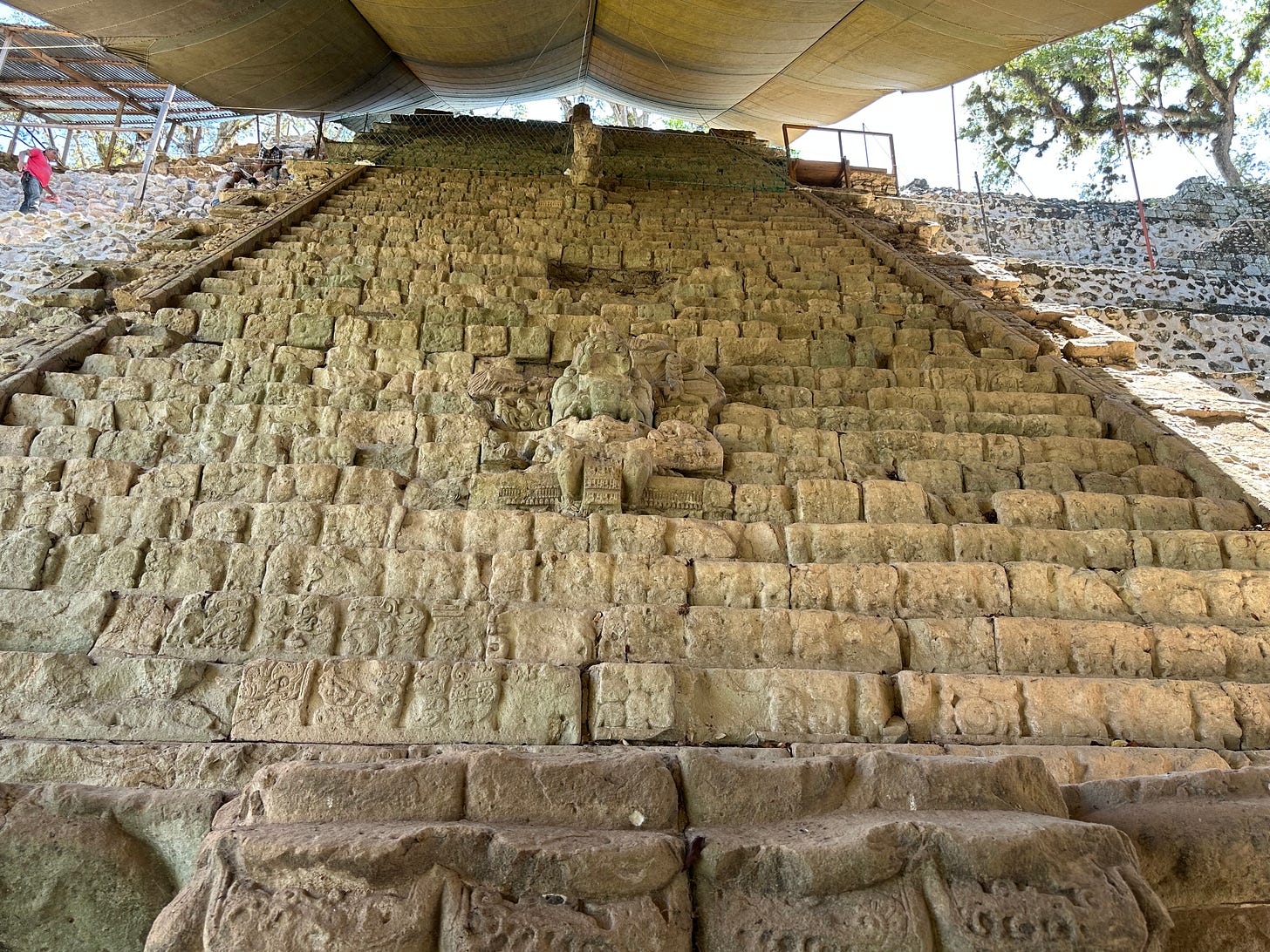 the hieroglyphic stairway
the hieroglyphic stairway
From there, we walked over to Temple 11, with another elaborate stela at its base.
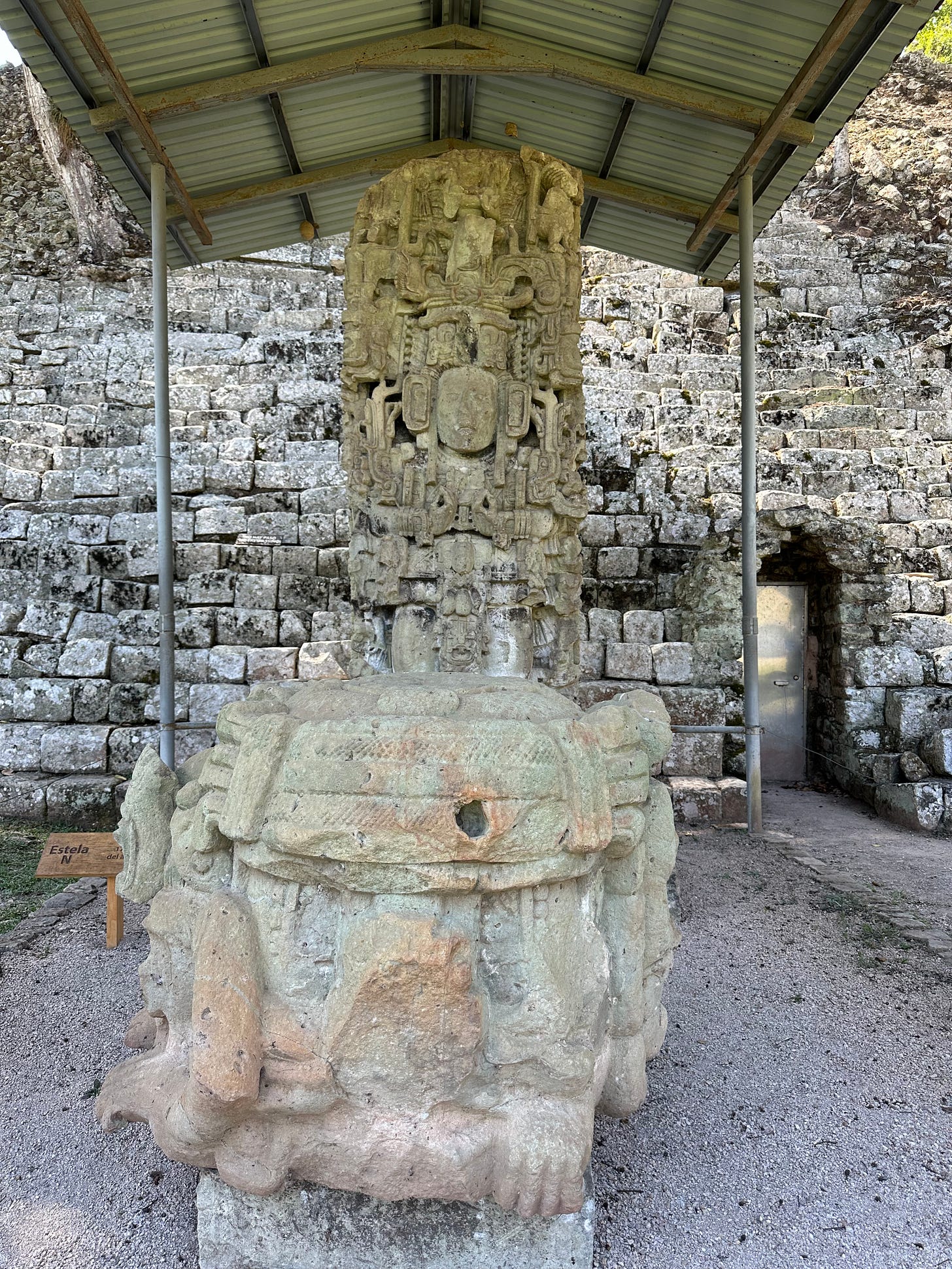 Stela in front of Temple 11
Stela in front of Temple 11
To climb the pyramid, we walked around it and took the modern staircase set up for it. From the top, we enjoyed the view of the Plaza and the Copán Valley.
 View from top of Pyramid 11
View from top of Pyramid 11
After spending time in the shade of a huge ceiba tree growing on top of this pyramid, we descended on the other side onto the West Court of the Acropolis, where we found a replica of the famous Altar Q (the original is at the museum at the site), representing all the rulers of Copán, starting with the founder of the dynasty, and ending with the 16th.
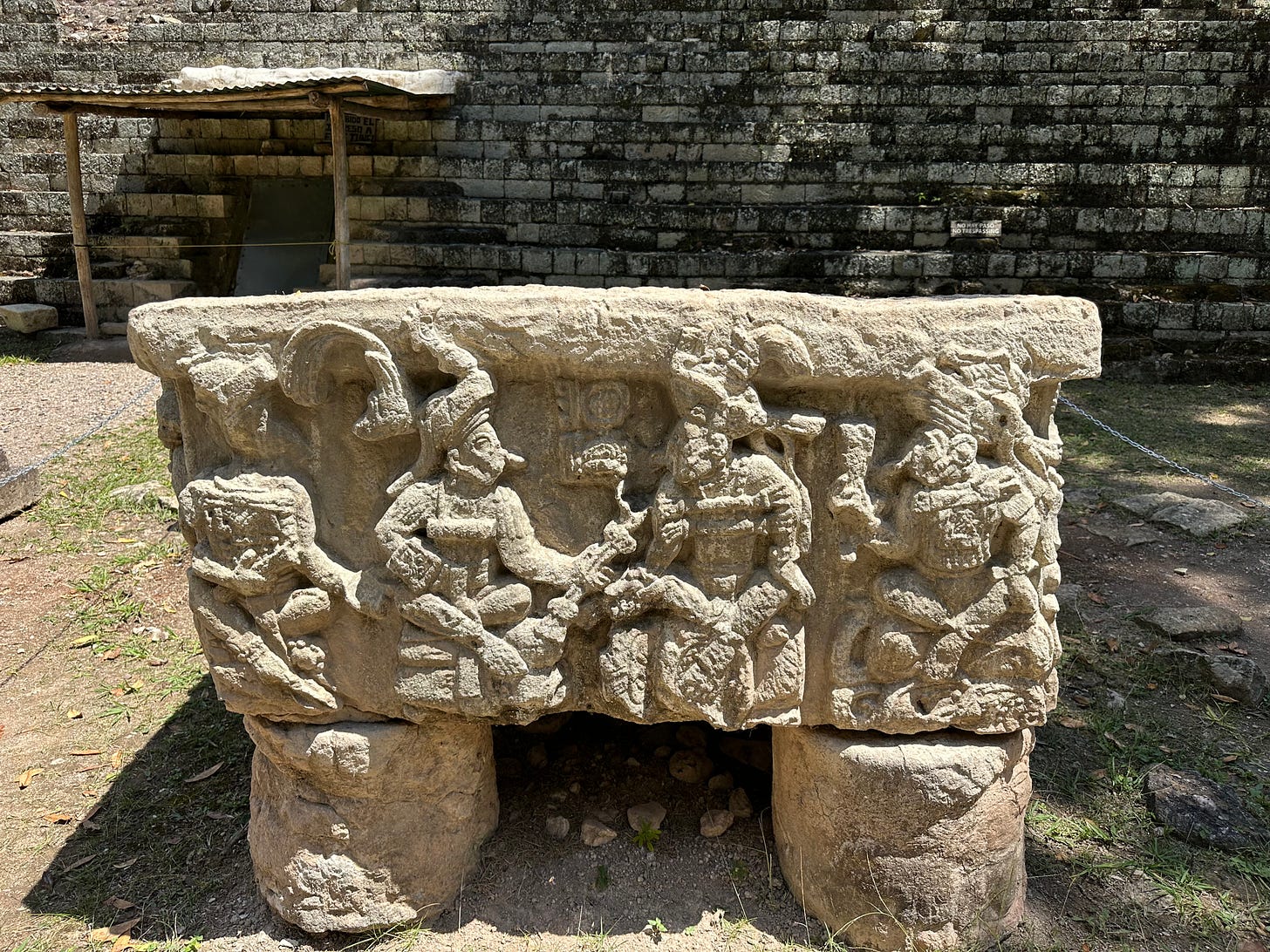 Altar Q in the Acropolis
Altar Q in the Acropolis
Dominating this plaza – and the next – was Temple 16, encasing an earlier pyramid, the famous Rosalila. (Below it, two other structures encase the tomb of the founder of the Copan dynasty, K’inich Yax K’uk’Mo.) Years ago I watched a documentary about the time it was discovered, and I wanted to see it ever since. I finally did.
A short tunnel leads inside this pyramid, where we saw parts of the walls of Rosalila, behind thick glass. Not as colorful as I expected (apparently, the airflow from the outside from when they opened the tunnel, faded some of the paint), the masks visible behind the glass are still impressive.
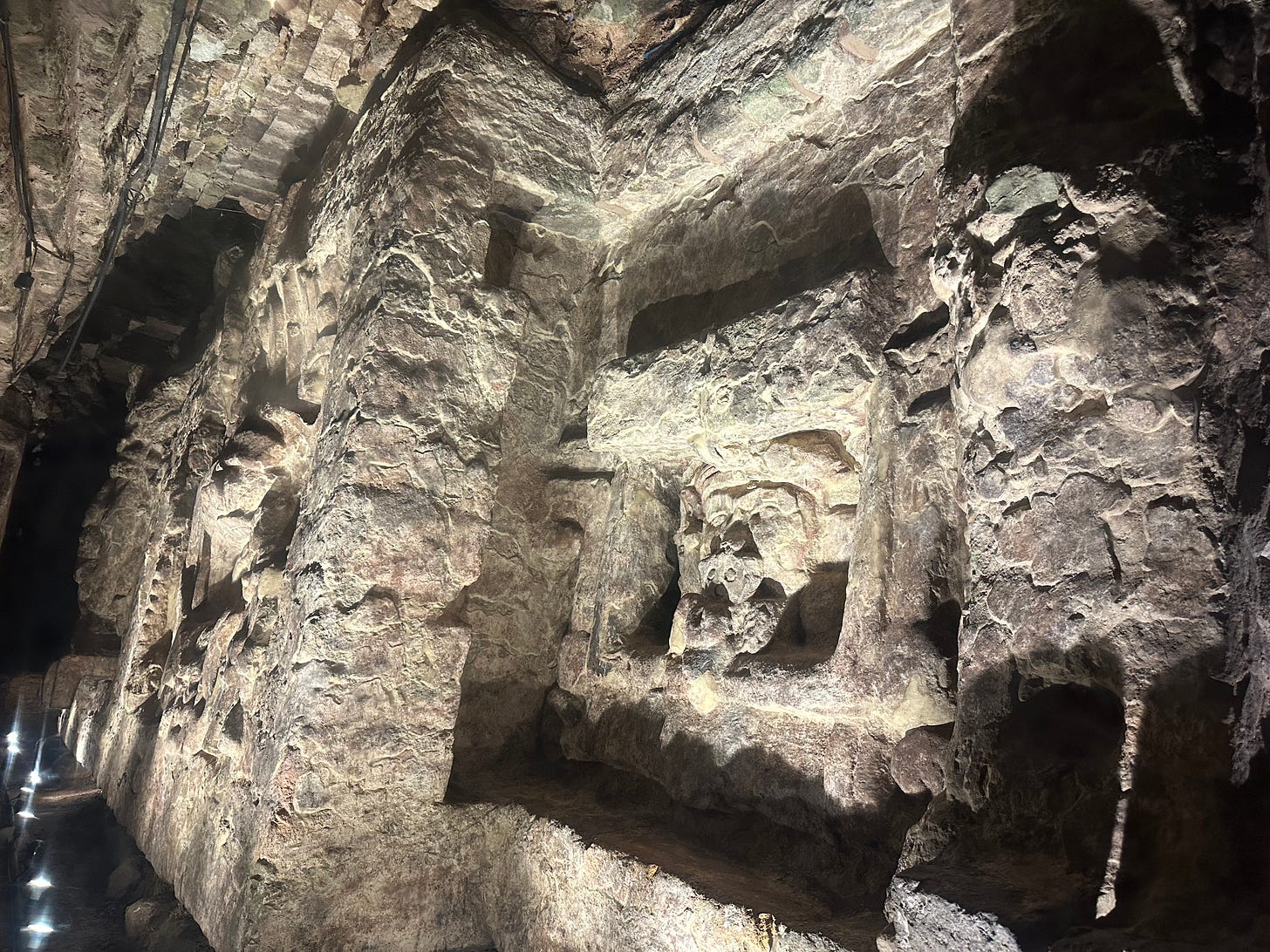 in the tunnel of Rosalila
in the tunnel of Rosalila
It was midday, sunny and warm, so we continued our visit in the longer tunnels within the adjacent pyramid.
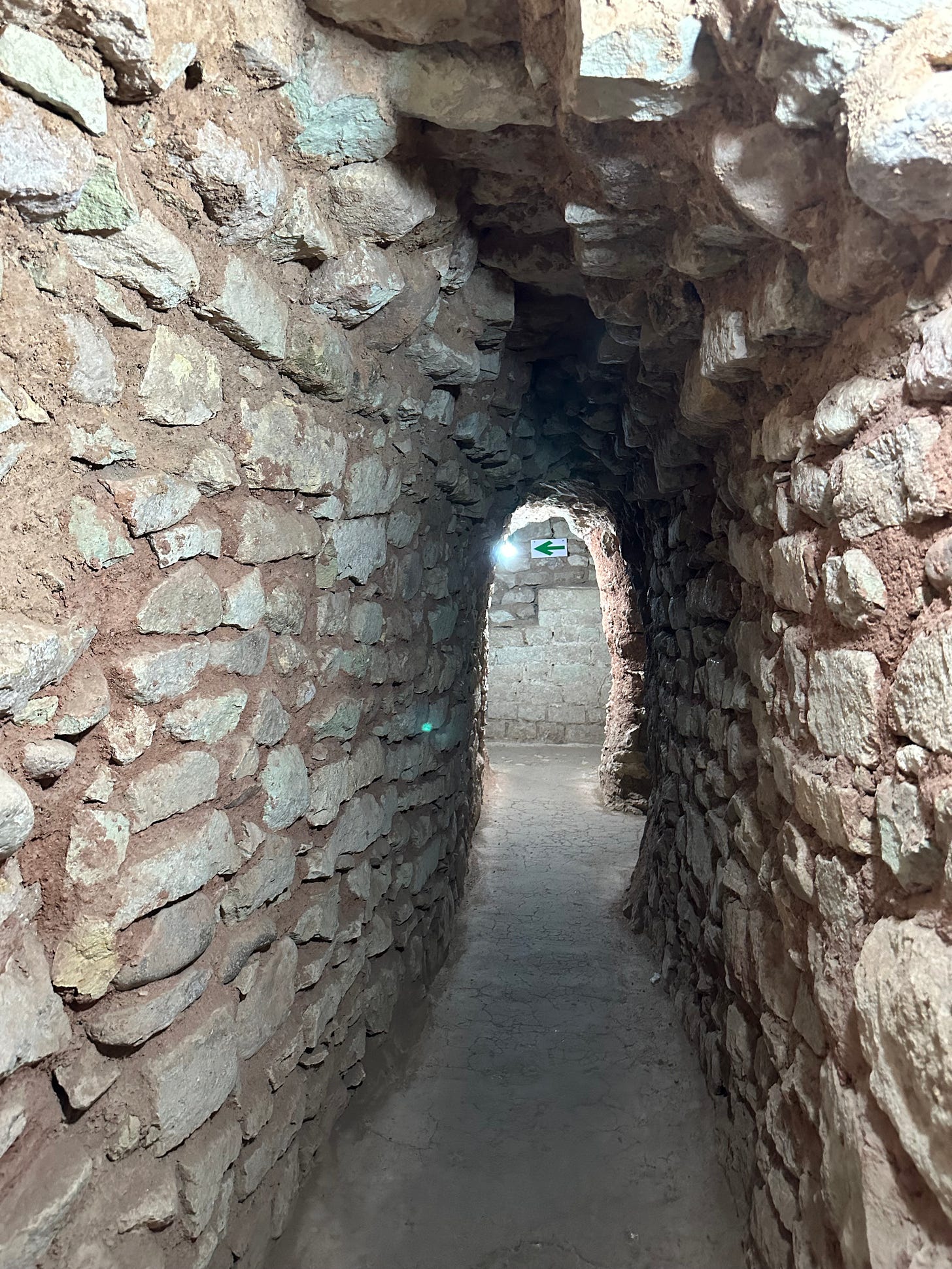 In the tunnels between an older pyramid and the one still visible on top
In the tunnels between an older pyramid and the one still visible on top
We ended up behind the pyramid, at the edge of the site, where a path lead us back towards the main plaza.
We spent more time here, but soon we left the site to have time for visiting the museum. We knew we would return the next day to explore some more.
The museum turned out to be much more impressive than either of us expected. The entrance was through a tunnel, which opened up to the sight of the reconstructed Rosalila.
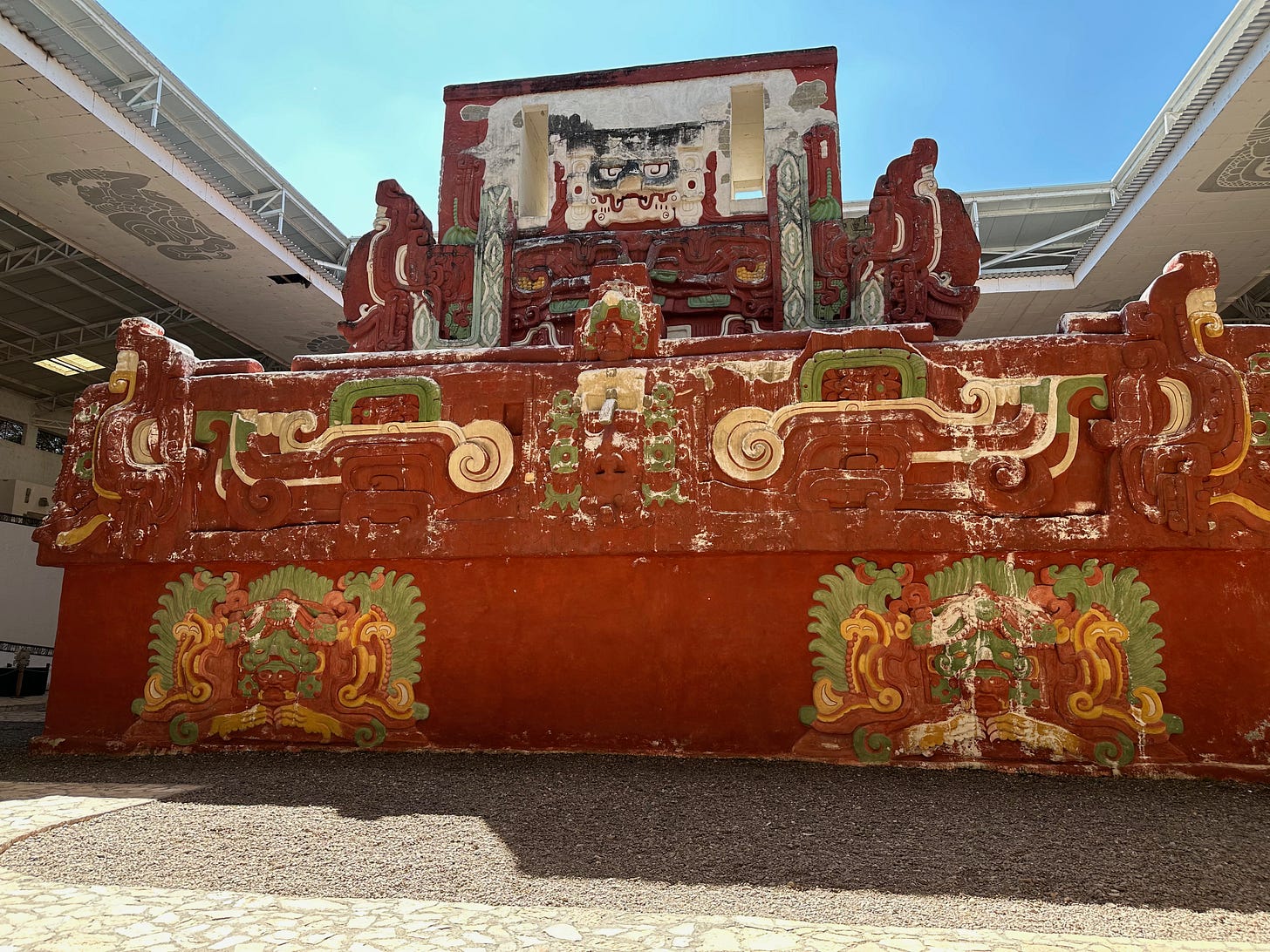 Reconstruction of Rosalila in the museum of Copan
Reconstruction of Rosalila in the museum of Copan
By the time we were ready to leave, we were out of water and snacks, and we had a kilometer to walk to our hotel. On the way out, we spotted a restaurant on the premises, and we headed over. For the next two days, as we returned to the site, this tiny restaurant was the spot for our lunch-break.
The site was closing by the time we walked out. A shaded walking path, separated from the road by a wide stretch of vegetation, led back to town. Walking along this path, we passed two more stelae, one near the road, Stela 5, and another a bit farther, in the field. Though outside of the archaeological site’s gates, they still belonged to the ancient city.
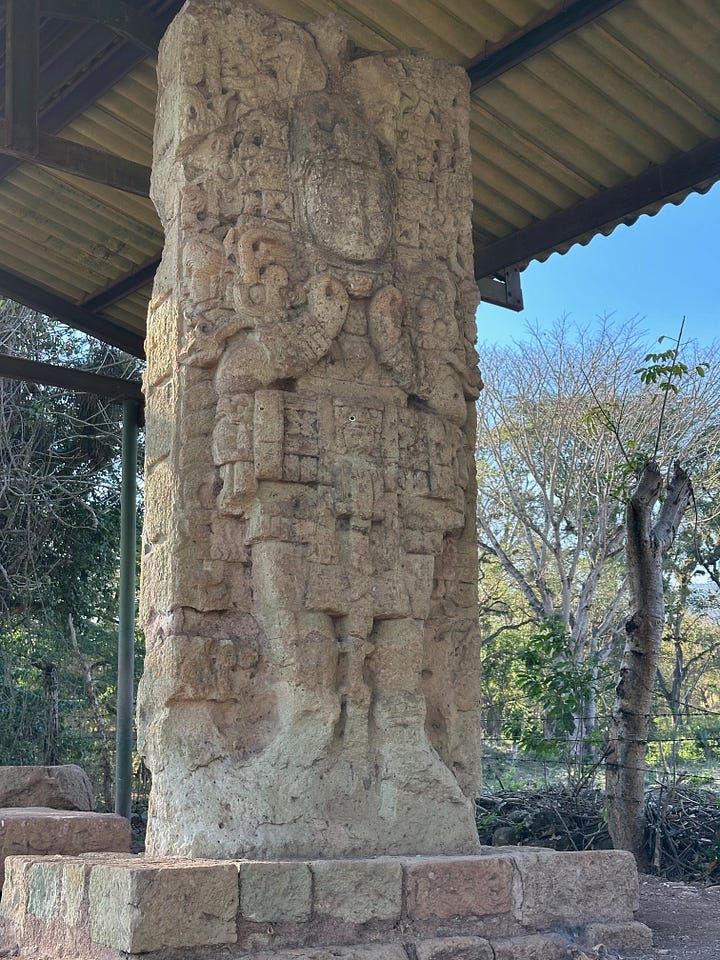 Stelae 5 (along the road) and 6 (in the field)
Stelae 5 (along the road) and 6 (in the field)
Though one day might generally be enough to visit the most impressive sights in Copan, we needed three to see it all. On our first full day, we didn’t even make it to Sepulturas, the residential area of nobility of the city, about a half-mile walk from the main site. We explored it on our second day and found the homes of many of the craftsmen of Copan, compounds surrounding their own small plazas.
 Replica of the Skyband bench in the Palace of the Skyband bench at the Sepulturas (we saw the original at the museum)
Replica of the Skyband bench in the Palace of the Skyband bench at the Sepulturas (we saw the original at the museum)
On our last day we revisited our favorite areas (and found out that we’ve missed a small temple). I sat for a long time on top of Pyramid-Temple 11, in the shadow of the large ceiba tree in the midday heat, while Jeff went off to take more photos.
Looking down onto the remains of the ancient city, I imagined it at its height – during the reigns of K’ahk’Uti Witz’ K’awiil (Smoke-Jaguar), and Waxaklajuun Ubah K’awiil (18-Rabbit), and also at its last stages of decline, as the surrounding forests and farm lands disappeared, replaced by elaborate, colorful stone buildings and edifices.
A clear view of the rise and fall of a great civilization – history we could have learned from…
Note:
The original version of this post was first published on my Substack newsletter, Letters from a Wanderer, under the title Copán Ruins – In Photos
To receive future posts directly in your inbox, before they are published on this site, consider signing up for the newsletter (link in the footer).
Please visit:
Our Sponsor
